RECOIL OFFGRID Gear Night Vision: Armasight’s PVS-14 “Starter Kit”
In This Article
We’ve talked before about the vast capabilities afforded by having some type of night observation device (NOD) as part of your preparedness plan. Once you’re past the basics of food, water, safety, and power, we’d rank having a night vision device such as NODs as a Top 3 consideration beyond those — more so than body armor or huge stockpiles of ammunition. Before you balk at that statement, remember that our world is dark 50 percent of the time, and decades of crime statistics support the notion that people prefer to do bad things under the cover of darkness.
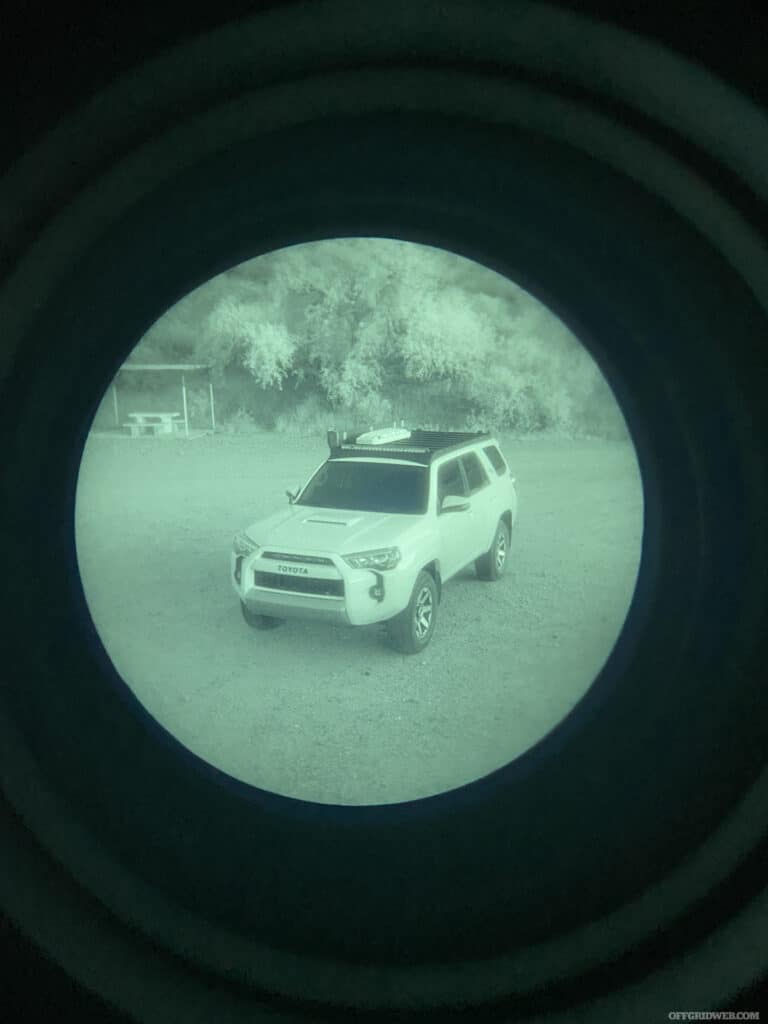
Above: The view through our white phosphor Armasight PVS-14 was clear and crisp with no noticeable blemishes.
When you couple this with the fact that more people will be more inclined to do bad things when resources are scarce, or they feel threatened or afraid, the ability to see clearly at night becomes immensely important. Can you do the job with flashlights and fire? Absolutely, but NODs offer the distinctly unique advantage of being able to see without being seen.
While most Hollywood depictions of survival situations include dramatic gunfights or street brawls with baseball bats wrapped in barbed wire, the reality is spotting and avoiding a fight is always safer than trying to out-violence the other party. Especially if your preparedness plan includes looking out for loved ones or children. Even within preparedness and self-sufficiency circles, night vision is most commonly discussed in context of shooting. But there are a myriad of other applications for these devices that aren’t gun-related at all.
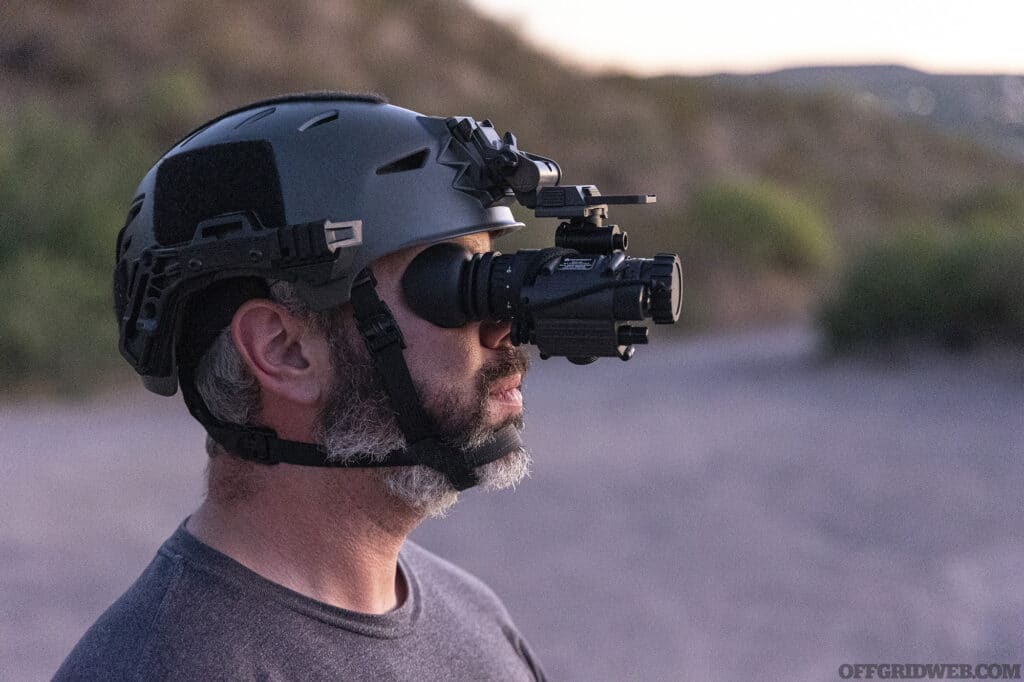
Above: The Armasight helmet kit has everything you need to get started with night vision: helmet, mount, PVS-14, and even a padded carrying case.
The most obvious is passive observation. Whether the power goes out on your street, or you are hunkered down at a campsite or rural “bugout” property, NODs give you a clear sweeping view of your surrounding area that puts even the best flashlights to shame. Likewise, driving at night is greatly enhanced with night vision. Granted, we don’t recommend turning your headlights off on your evening commute home to drive with night-vision — in that setting, being seen by other motorists is actually beneficial.
But in blackout conditions where you may be alone on the roads, or where broadcasting your position could attract unwanted attention, it’s an effective in extremis option to have if needed. The flexibility to use this option is, again, greatly increased if traversing backroad trails on a dirt bike or ATV. The same benefits apply if moving overland on foot. Even sitting in your living room, peeking out the window to check for trouble when the dog starts going nuts in the middle of the night is a potential use case for these devices. And all of this is possible to do completely hands-free, another advantage over portable light sources like lanterns and flashlights.
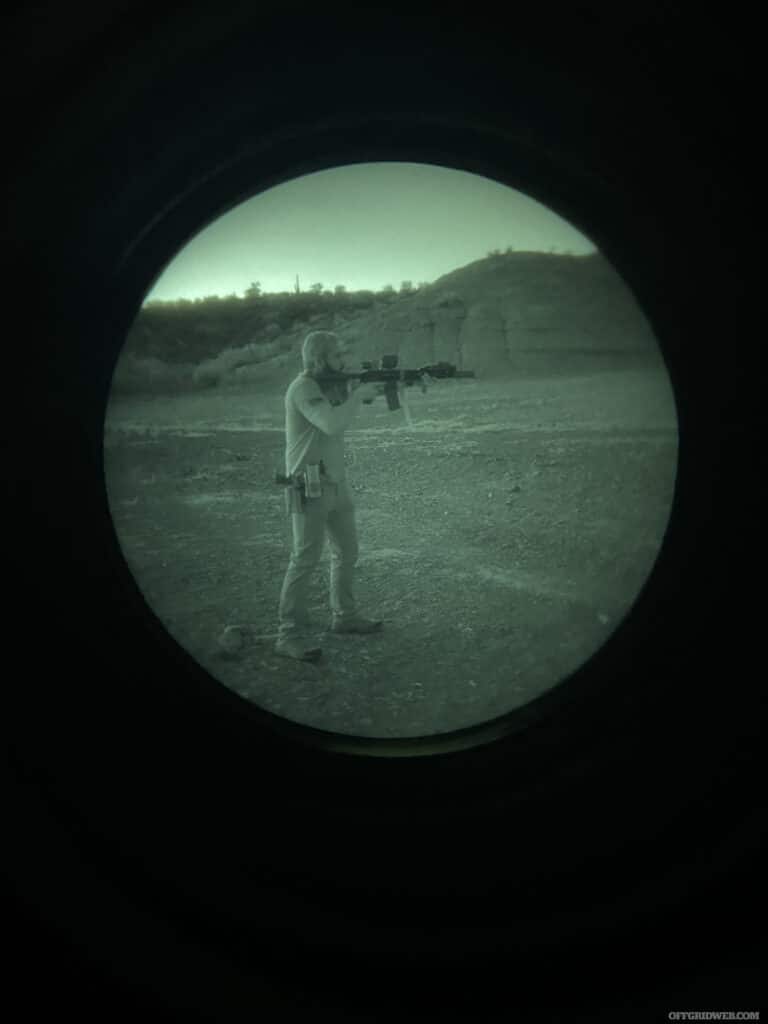
Above: Threats obscured by darkness become as clear as day.
The biggest barrier-to-entry for consumers to get set up with night vision is cost. Despite the fact that image intensification technology has been used by the military since the 1950s, pricing remains prohibitively high for most. This is partly due to the specialized materials and equipment needed to produce them, and partly because — even with their recent proliferation into the consumer market — these devices are produced in incredibly small quantities compared to other consumer electronics. The other factor that drives cost is that, to be utilized to their full capabilities, NODs must be considered as a system rather than an individual item.
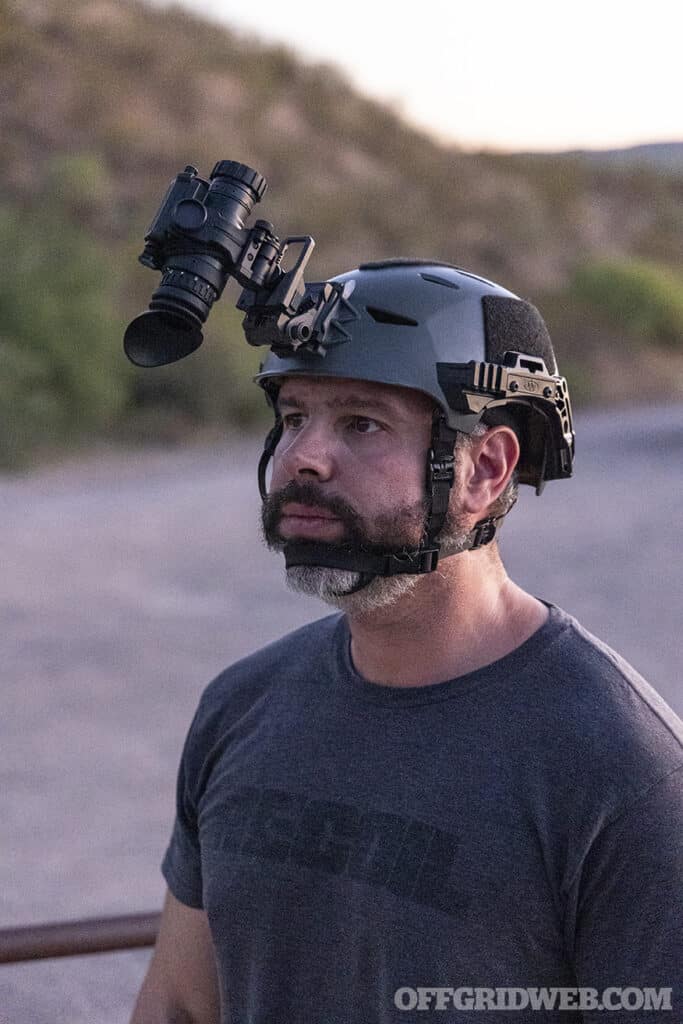
Above: The Wilcox G24 mount allows the PVS-14 monocular to flip out of the way with the press of a button when it’s not in use.
While you certainly can go out and buy a night vision monocular by itself, and nothing else, that relegates you to handheld use only, which undercuts one of the primary advantages of NODs in the first place. But overcoming this requires several other components:
When you consider that the industry standard mount (i.e., a flip-down, adjustable adapter arm) for most night vision devices, the G24 by Wilcox Industries, sells for over $500 by itself, the financial investment required for a proper night vision system becomes painfully apparent.
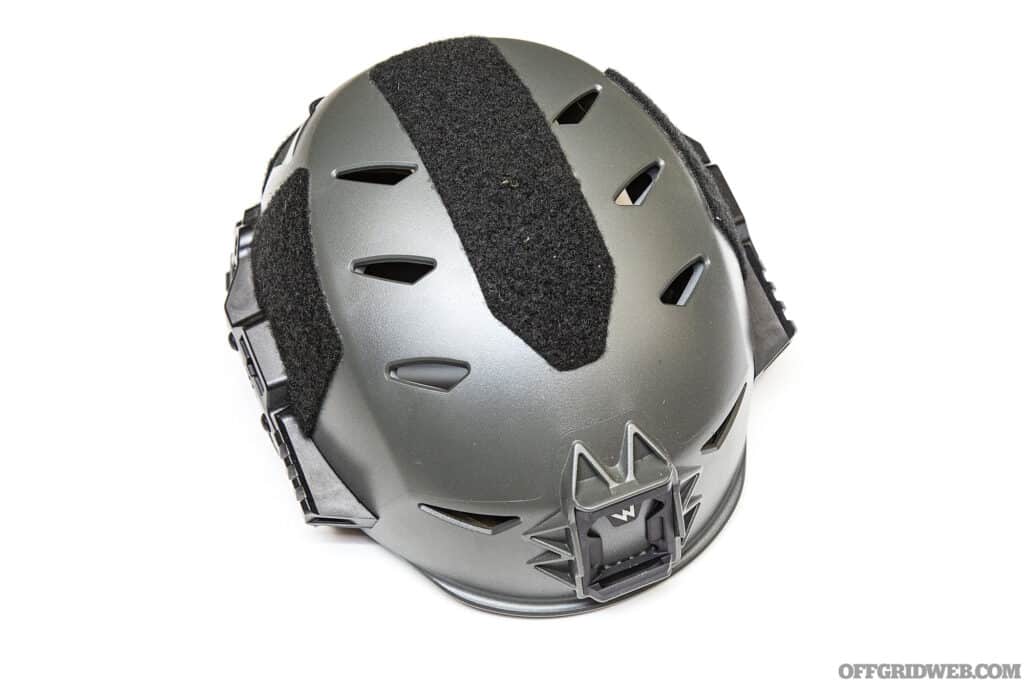
Above: Each kit comes with a Team Wendy Exfil LTP bump helmet in Armasight’s signature gray color. The helmet features a built-in shroud for attaching an NV mount, as well as Exfil LTP 3.0 accessory rails.
Furthermore, if you don’t know exactly what you’re shopping for, it’s very easy to get duped with counterfeit components — even when you shop directly from night vision manufacturers. (This specific issue happened to us when RECOIL OFFGRID staff received a set of test NODs directly from a company that produces night vision. That sample, shipped from the factory, included a surprisingly convincing counterfeit G24 as part of the test kit.)
Seeing the need to ensure customers can utilize their NODs to full capacity without worrying about buying incorrect or counterfeit parts, Armasight has brought to market a complete and comprehensive night vision “starter kit.” It includes everything you need to open the box and put your NODs directly to work at an MSRP of $6,399. Our test kit included the following:
RECOIL OFFGRID staff has reviewed Team Wendy’s helmets in several previous articles and continues to rely on those helmets regularly for classes and training. In situations where ballistic protection isn’t needed, the TW bump helmet is an excellent, lightweight, and affordable choice from a company with an established reputation for high-quality cranial protection equipment. Their suspension system is one of the most comfortable ones we’ve come across, and our test helmet included accessory rails over the ears for mounting communications gear, over-the-ear hearing protection, or small flashlights for administrative tasks.
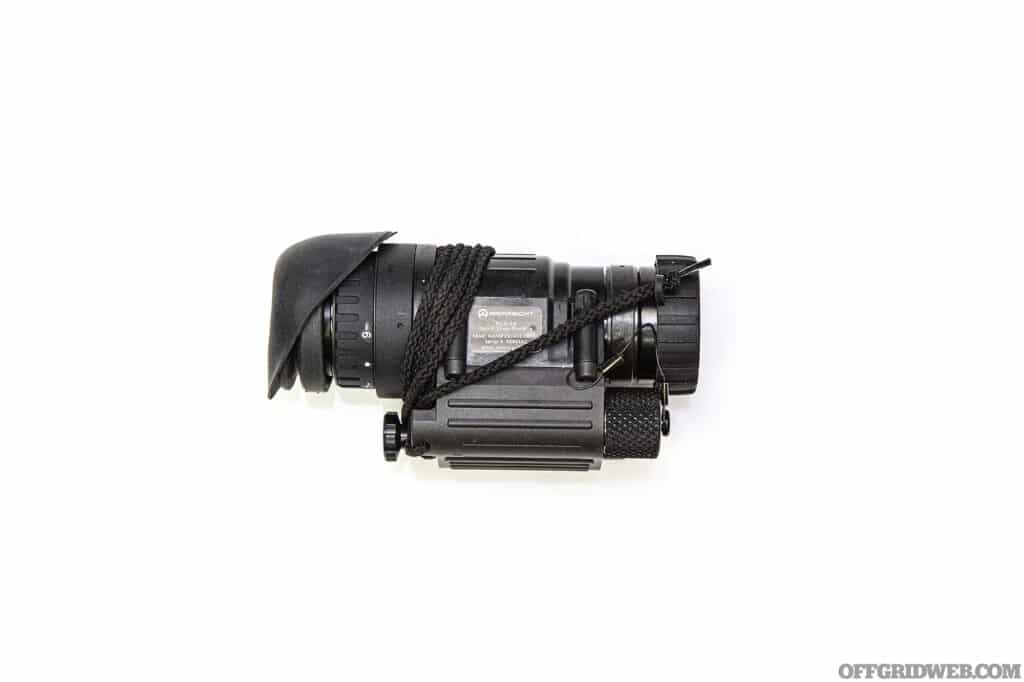
Above: This Gen 3 Ghost Pinnacle PVS-14 from Armasight is rated at a minimum FOM of 2000. For $1,000 more, you can select a Pinnacle Elite tube with a minimum FOM of 2376.
The Otte Gear helmet bag is also an item that our staff was already using before we received the one in our Armasight kit. This bag is an incredibly lightweight, well-thought-out bag meant to carry your helmet, NODs, and some accessories. There’s enough room inside for the helmet, and even includes hook-and-loop straps to secure your helmet so it doesn’t move around during transport.
There are also moveable dividers and a small rectangular zip-pouch inside specifically sized to hold single- or dual-tube NODs. We were able to fit the PVS-14 and its G24 mounting arm inside this pouch with no issue. The dividers allow you to section off space in the bag for comms cables, lights, batteries, counterweights, or other small sundries often associated with nighttime operations. The bag comes in all of the standard tactical colors, and several MultiCam patterns. Our sample bag was gray and matched the included Team Wendy helmet almost perfectly — a very nice touch on the part of Armasight to color-coordinate the accessories.
The Wilcox G24, as stated, is the industry standard for night vision mounting arms. It provides adjustments for height and linear distance (how close the NODs sit to your eye) and has a rock-solid lockup, whether the NODs are raised or lowered. It’s a premium product at a premium price, so we’re glad to see it here rather than a low-cost alternative. Also included are two “J-arms” — the pieces that actually attached to the night vision unit itself.
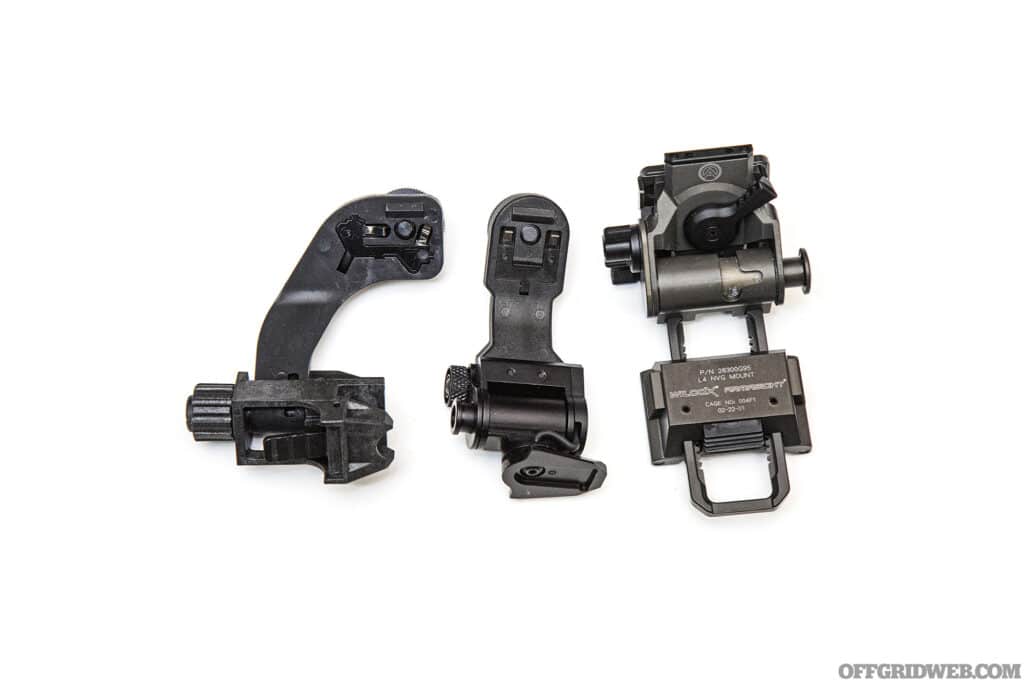
Above: Included accessories from left to right: J-arm for standard-issue USGI Rhino mount, J arm for Wilcox dovetail mount, Wilcox L4 G24 night vision mount.
With dual-tube units, the housing itself comes with an integrated dovetail to hook onto the G24. But the PVS-14 style housings have a screw hole, which requires a J-arm to bridge from the unit to the G24. Our Armasight kit included two J-arms: one with the Wilcox-compatible dovetail, and a second with a snap-in pinch clip. The latter is left over from legacy military mounting systems. Prior to the days of having helmets with shrouds on the front, soldiers used a plastic-and-nylon apparatus nicknamed the “skull crusher” by those who wore them.
Looking like dental headgear made from straps and ABS plastic, the skull crusher was widely used by military forces needing to wear night vision for many years. Interestingly enough, our test kit also came with a skull crusher for those who don’t want to use the Team Wendy helmet, and also enjoy having headaches in the dark. For those who want something more comfortable than a skull crusher without the bulk of a helmet, we also experimented with a Crye Precision NightCap, a mesh nylon watch-cap style garment with padding and a modern shroud up front. Hook-and-loop patches on the cap allow the attachment of signal strobes or counterweights.
The single-tube NV device houses Armasight’s Pinnacle tube, which, according to the manufacturer, is rated for minimum of 2000 FOM. Armasight also offers an optional Pinnacle Elite tube rated at a minimum of 2376 FOM; MSRP for that kit is $7,399. The Figure of Merit (FOM) is a rating that measures the overall image clarity and effectiveness of the tube. Generally speaking, a minimum FOM of 2300 or higher falls into top-of-the-line category. Of course, higher FOM typically translates directly into higher price.
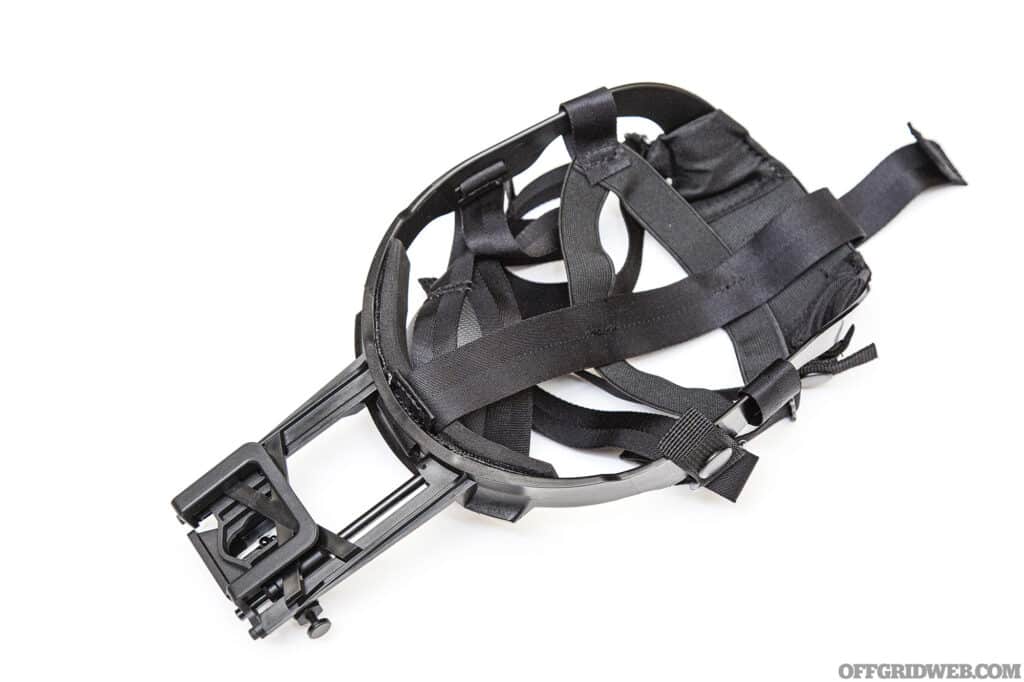
Above: This Mil-spec “skullcrusher” headgear was included in the kit as a helmet alternative. It’s nice to have as a backup, but it’s about as comfortable as the name implies.
So, there’s a trade-off to be considered in terms of budget. There’s a strong culture in the night vision community of “get the best or don’t get anything at all,” which is echoed in lots of social media posts and forum discussions, usually along with the snarky quip of “don’t be poor.” But the reality is that a top-of-the-line system with a five-figure price tag is just not attainable for many of us, regardless of how long we save up or how hard we shop for the best deals.
General Patton once said, “a good plan executed now is better than a perfect plan next week.” In the same vein, we think there’s a legitimate counterargument to be made that having the capability of night vision is better than not having it. If a top-tier unit isn’t reasonably in your price range, the Armasight Pinnacle tubes provide good image clarity and are wholly appropriate for most civilian applications. While this logic is bound to offend NV aficionados — and we understand why, to a degree — the bottom line is having access to effective night vision now might be better than waiting months or years until you can afford something a few percentage points better.
There’s obviously a point of diminished returns when bargain shopping for this kind of equipment. You can find dubious “night vision” systems on Amazon for a couple hundred bucks, but we strongly advise not going that route as it’ll absolutely be money wasted when you need to use it at a critical time. Our experience with Armasight’s unit is the closest we’ve come to finding mid-market NODs that are up to the task while offering reasonable compromise for cost.
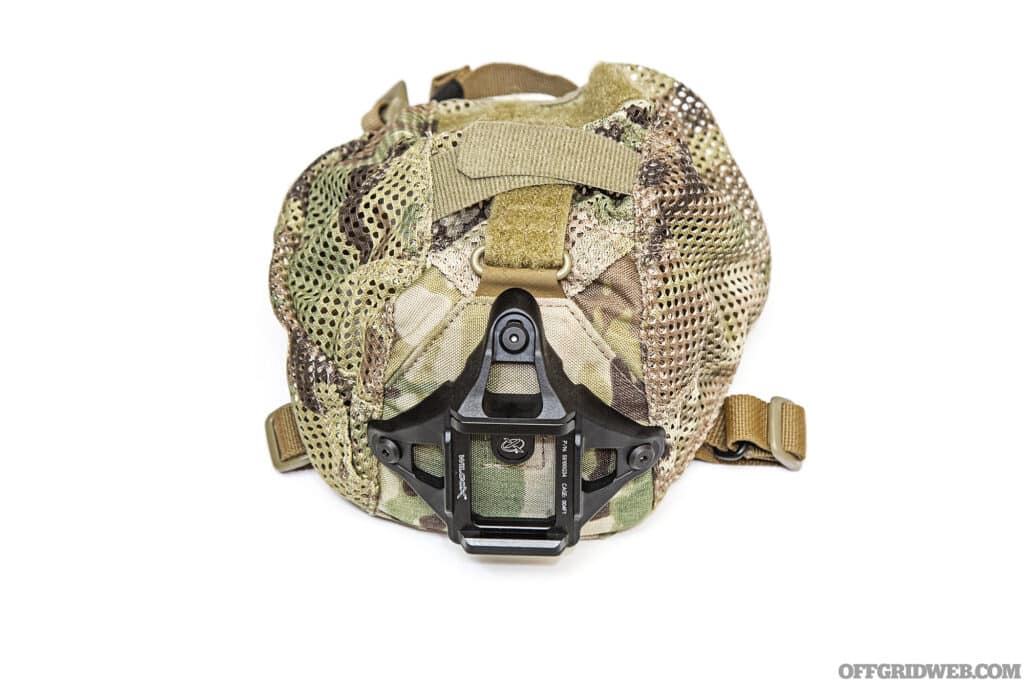
Above: The Crye Precision Nightcap is a much more comfortable way to wear a PVS-14 in situations where you don’t want or need a helmet. (Not included in the Armasight kit.)
There’s no denying the sex appeal of dual-tube units, but we also think a single-tube PVS-14 style device is the most versatile option for general use. Sometimes referred to as “the AK-47 of night vision,” the PVS-14 monocular gives you full night vision capability without the additional cost, weight, or complexity of dual-tubes.
Additionally, the single-tube setup excels in mixed lighting environments like urban or suburban environments where you’re not dealing with total blackout conditions. It keeps one eye free to make use of the increased ambient light, and we’ve found this to be a big advantage for spatial awareness in mixed-light settings. For those who strongly prefer dual-tube units, Armasight does offer a corresponding kit with all of the same accessories that includes dual-tube NODs, albeit at a higher price point.
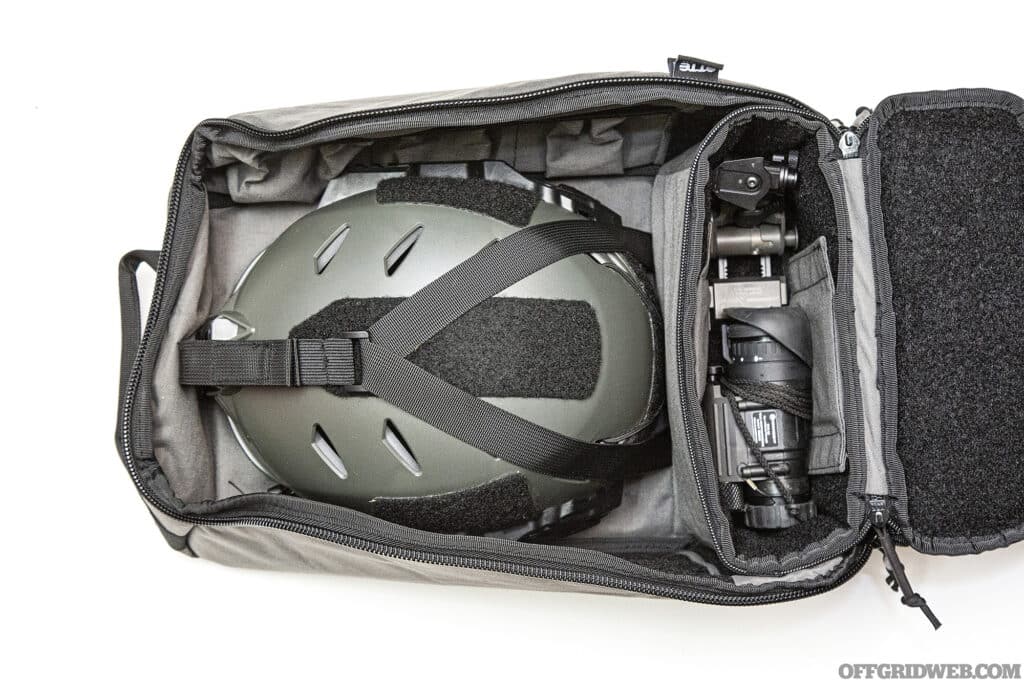
Above: A gray Armasight-branded carrying case from Otte Gear ensures all the components stay secure, protected, and clean when they’re not in use. Night vision gear isn’t cheap, so protecting it is crucial.
To date, this is the only kit we’ve seen that provides a civilian-oriented, “turnkey” solution with all of the required pieces of equipment to take full advantage of having NODs in your inventory. Even though it’s possible to purchase all of these items separately, perhaps with a small amount of savings if you shop hard, the convenience afforded by Armasight’s bundle approach is immediately apparent.
For entry-level consumers who don’t have the budget or man-hours to dive down the technical rabbit hole of piecing together a night vision setup, this kit is a solid place to start from. If you don’t already have any of the required components in your preparedness loadout and are looking to add nighttime working capability, we encourage you to consider this bundle.
Armasight
URL: armasight.com

Don't forget to subscribe to Recoil Offgrid's free newsletter for more content like this.
 STAY SAFE: Download a Free copy of the OFFGRID Outbreak Issue
STAY SAFE: Download a Free copy of the OFFGRID Outbreak Issue
No Comments